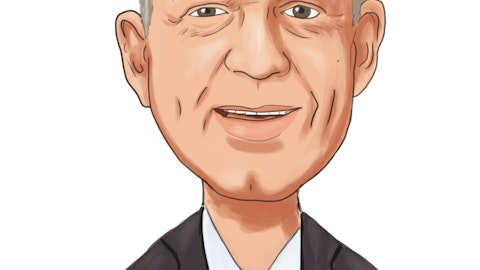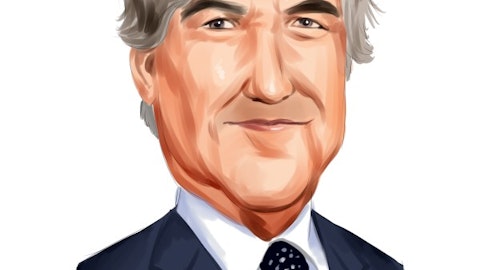And as we provide more choice and offer more value-added services, we will see a higher level of VAS revenue, which will, we believe, drive further rise in ARPU.
Operator: The following question will be presented by Joonsop Kim from KB Securities.
Joonsop Kim : I’m Kim Joonsop from KB Securities. I just have one question for you, which relates to the private 5G network project. I would like to understand what KT’s view is with regards to this private 5G network and what your strategies are, as we see many players enter into the 5G — the private 5G domain? I would like to understand what your take is on the overall trajectory of this domain.
Kim Young Jin: Thank you, Mr. Kim, for your question. You asked about what our strategies are and what our outlook is with regards to the private 5G network. Now this year marks the first year under the government initiative to actually take the private 5G network project as countries — important — country is a very important project. And we were able to see that there is a business opportunity here. Now the government has selected 11 different government projects. And of this, KT Consortium has won orders and projects in 4 main areas, which include public health care, aerospace, private manufacturing and 28-gigahertz education. And we are in the process of building out the 5G private network. Now, KT has a business opportunity and that is, it can be a company that actually builds out the private 5G network and also as an operator.
And also, we can come up with various business opportunities together with other KT Group companies, the subsidiaries, by winning the 5G private network license. So at the KT Group level, we can be very flexible in engaging with the 5G private network. Now a typical project structure for a private 5G network is that the client will usually build out the assets, the 5G base station, as well as the 5G core that is a typical design. But in order to alleviate the cost burden of our clients, 5G base stations will be built out by the client themselves, but 5G core will be handled or will be handled by KT based on our internal cloud platform. And we are currently thinking of providing as a service to our customer clients.
Operator: The following question will be presented by Neale Anderson from HSBC.
Neale Anderson: I would like to ask about the competitive dynamics in both the content and the enterprise solutions market, please? The reason I’m asking is, I think all 3 large telcos are focused on this area. And I’m wondering if you’re seeing any cost inflation, particularly in terms of labor costs or specifically in the content market, the cost of content itself. That’s my first question. Second question relates to network slicing and the ability to charge different groups of users, different amounts depending on the technology parameters they’re receiving. When do you think you’ll be able to launch services using network slicing?
Kim Young Jin: Thank you very much for the question. I will first respond to your question about network slicing. Now if you think about the basic foundation that will support the future of 5G B2B services, we are expecting and hoping that network slicing will be an opportunity for us to really reevaluate the value that 5G network offers. Now, as 5G network slicing has been recognized by the government authorities as a specialized services, we now have an institutional basis whereby we could actually provide customized services in the B2B domain specific for a customer. And because that will enable us to diversify the pricing, the price that we charge to our customers depending on the customized and the bespoke product, we think from mid- to long term — in the mid- to long-term horizon that will positively impact 5G profitability.




